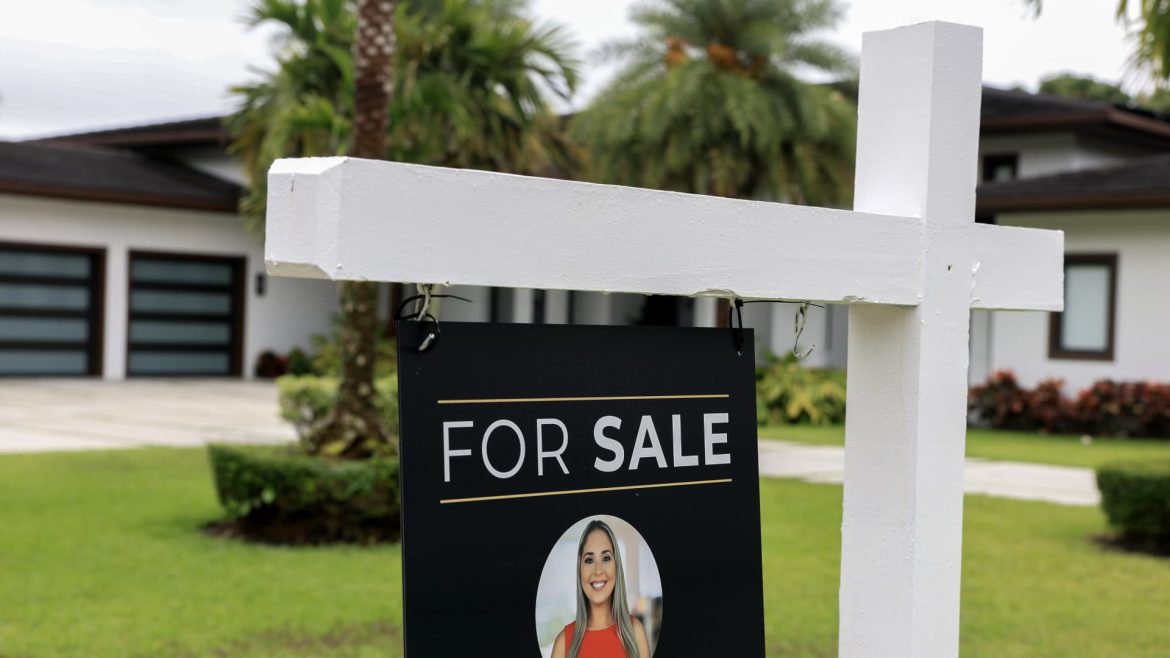Navigating the Shifting Landscape of U.S. Mortgage Rates in 2025
Mortgage rates in the United States have experienced notable fluctuations throughout 2024 and into 2025, creating a complex environment for homebuyers, refinancers, and the housing market as a whole. This report synthesizes recent developments, underlying economic factors, and expert forecasts to provide a comprehensive understanding of how mortgage rates are evolving and what implications they hold for consumers and the broader economy.
—
Current State: Mortgage Rates Hovering Near and Above 7%
Over the past several months, mortgage rates have oscillated significantly, touching their lowest levels since October 2024 before climbing back close to or above the 7% mark. This level has proved to be a critical psychological and financial threshold, particularly for 30-year fixed-rate mortgages—a popular choice among homebuyers.
– Recent data indicates rates moving above 7%, with intermittent dips below that mark, as mortgage rates reached 7.43% at certain points and flirted with 8% briefly last year.
– The persistent rise above this threshold marks a challenging period not seen since the early 2000s, specifically 2002, in terms of borrowing costs.
– Refinancing demands have shown some resilience despite these increases, suggesting borrowers are selectively reacting to rate movements.
—
Key Drivers Behind Rate Movements
The movement in mortgage rates is driven predominantly by a convergence of macroeconomic and geopolitical factors:
1. Federal Reserve Interest Rate Policy
The Federal Reserve’s monetary policy has exercised a heavy influence:
– Fed rate hikes have elevated mortgage interest rates, often following with a lag due to mortgage bond market responses.
– Although there were expectations that Fed rate cuts would lower mortgage rates, actual market dynamics have often seen rates rebound, reflecting investor caution and inflation concerns.
2. U.S. Sovereign Credit Rating Downgrades
Multiple credit rating agencies, including Fitch and Moody’s, have downgraded the U.S. sovereign debt rating from its previously pristine triple-A status:
– Downgrades from AAA to AA+ or equivalent have rattled markets, prompting investors to demand higher yields on government bonds, which translates into increased mortgage rates.
– These downgrades reflect concerns about rising national debt and long-term fiscal outlook, adding risk premiums to borrowing costs.
– Homeowners and prospective buyers face the direct consequence of tighter credit conditions as rates climb.
3. Inflation and Economic Uncertainty
Although inflation has shown signs of cooling, the overall economic environment remains uncertain:
– Inflation easing has caused experts to anticipate cautious Fed moves, limiting large rate cuts in the near term.
– Markets are currently pricing mortgage rates to stay around 6.5% to 7%, with limited expectations for rapid declines.
– Inflation and policy uncertainties maintain upward pressure on rates despite potential improvements in consumer prices.
—
Market and Consumer Impact
The implications of nearly 7% mortgage interest rates reverberate throughout the housing market and consumer finance:
Housing Market Slowdown
– Elevated borrowing costs have contributed to reduced mortgage demand. Weekly applications to purchase homes have dropped by as much as 10%, signaling constrained affordability.
– Origination volumes are weighed down by the persistent climb in rates, discouraging new homebuyers especially in price-sensitive segments.
– The housing market remains “frozen” or at least sluggish, with prices still elevated despite high mortgage rates, further limiting transaction volumes.
Refinancing Activity
– Although overall mortgage activity is dampened, refinancing shows pockets of surge as borrowers with older, higher-rate loans seek to capitalize on occasional dips in rates.
– Broker reports mention some lenders cutting fixed rates in the two-year to five-year fixed segments by up to 0.12 percentage points, but these cuts have generally been incremental and insufficient to dramatically alter the market mood.
—
Expert Forecasts and Prospects for the Year
Looking forward through 2025, forecasts remain mixed but generally pessimistic about sharp declines:
– The Mortgage Bankers Association (MBA) projects the average 30-year fixed mortgage rate to hover around 7% in the second quarter, dipping marginally to 6.8% in the third quarter, reflecting a slow recovery in rate levels but not a rapid fall.
– Economists and mortgage industry executives foresee the 6.5% to 7% range as a new plateau given the Fed’s cautious stance and ongoing economic risks.
– Some analysts anticipate modest rate relief later in the year, potentially reaching as low as 3.5% if global uncertainty diminishes and central banks ease policies, but this view is generally regarded as optimistic at present.
—
Navigating Mortgage Decisions Amid Volatility
For consumers and homebuyers, the current environment demands strategic consideration:
– Locking in current rates, even slightly above 7%, might be prudent given the risk of further increases tied to fiscal uncertainty and international events.
– Potential buyers should monitor shifts carefully but recognize that rates below 3% to 4%, previously seen in early 2020s, represent historical anomalies unlikely to recur soon.
– Exploring shorter-term fixed-rate options, adjustable-rate mortgages, or government-backed loans could offer tailored solutions aligned with individual risk tolerance and financial goals.
—
Conclusion: A Cautious Horizon for Mortgage Rates
Mortgage rates have climbed back to levels that increasingly pressure homebuyers and the housing market, dragged higher by Federal Reserve policy, U.S. credit rating downgrades, and macroeconomic uncertainties. While transient dips below 7% offer temporary reprieve, the broader trend suggests that sustained relief may not materialize quickly. As the market and policymakers adjust to this new reality, consumers must navigate borrowing decisions with an eye on evolving rates, balancing immediate affordability against longer-term financial planning. The 7% threshold, once considered high, is fast becoming the norm in a more complex, risk-aware lending environment.





